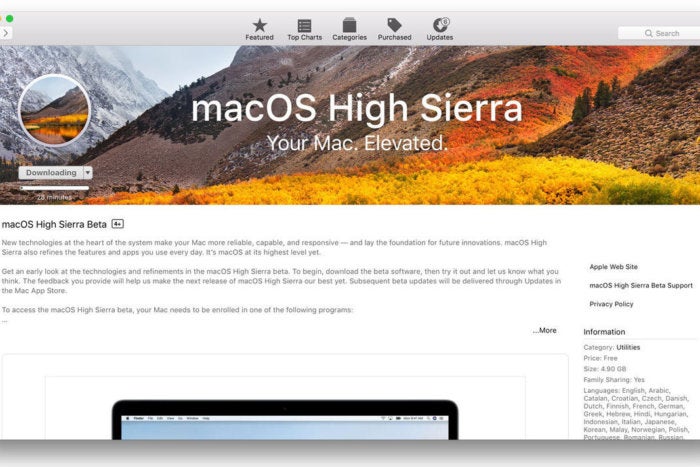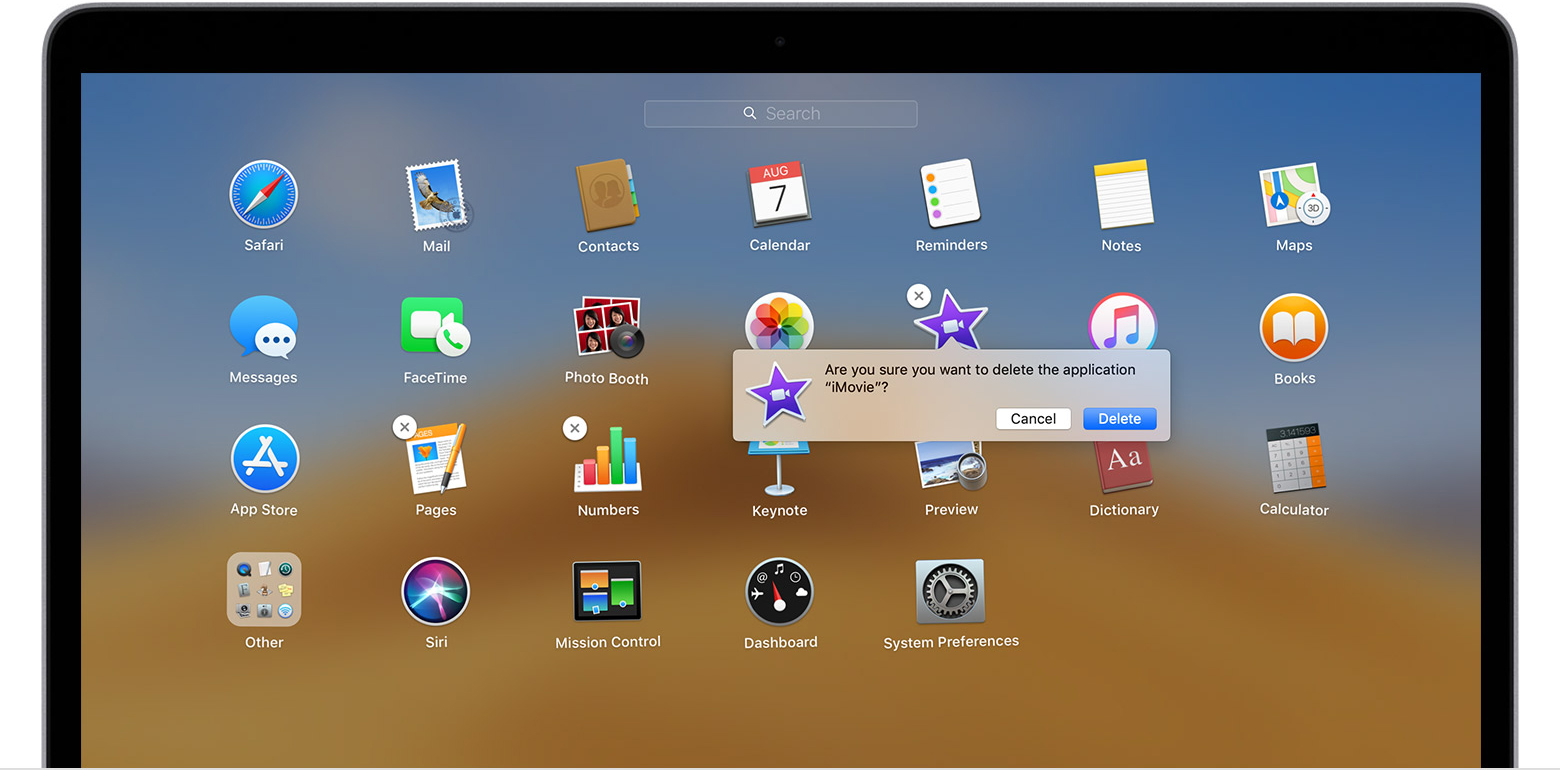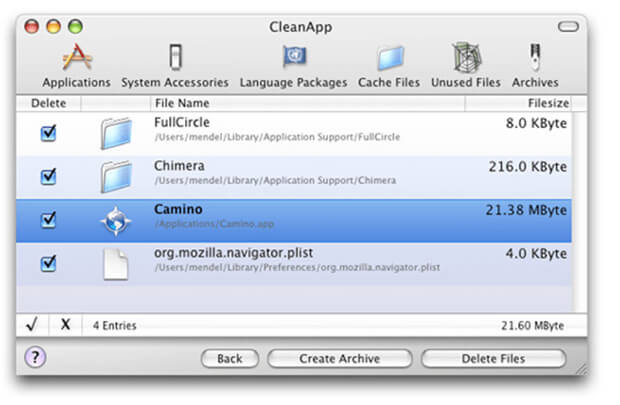As a macOS High Sierra user, you may find it’s not easy to delete applications sometimes. Don’t worry, Donemax DMmenu for Mac can help you to uninstall/remove applications quickly and completely. Here we will just share the process about how to quickly delete application on macOS High Sierra with this tool.
- How To Uninstall Apps Mac High Sierra Iso
- How To Uninstall Apps On Mac
- How To Delete Apps On Mac High Sierra
- How To Uninstall Apps Mac High Sierra 10.12
- Mac Os Uninstall App
How to remove apps from mac high sierra how to uninstall app from mac high sierra how to delete apps on mac high sierra how to delete apps on macbook high sierra how to uninstall apps on mac os high sierra how to delete apps on mac os high sierra Links: download appcleaner for mac os x html editor mac os x install macos mojave on virtualbox. Dec 05, 2018 Some popular uninstall program on Mac software include: CleanMyMac, which is versatile and costs $39.95. CleanApp, which is dedicated more exclusively towards decluttering your Mac’s system and costs $14.99. AppZapper, which focuses on getting rid of an app’s support files that might linger after you delete the app and costs $12.95.
Download the macOS High Sierra Installer from the Mac App Store. To download it, open the Mac App Store and go to the Updates tab (Here is a link.) When your installer is downloaded it will launch automatically but you need to quit it. How to Uninstall and Reinstall iTunes on Mac (macOS Sierra) Majority of people know how to uninstall programs. Drag the selected program you want to uninstall to the “Trash” folder; Open “Trash” folder and select “Empty” How to Uninstall Apps On Mac OS Sierra: Open “Launchpad” Hold down an app’s icon until they start to jiggle; Click on the delete button; To uninstall the other apps, drag the apps into the “Trash” folder. I'm pretty sure you have to disable SIP to uninstall pre-installed apps. System Integrity Protection is a security technology in OS X El Capitan and later that's designed to help prevent potentially malicious software from modifying protected files and folders on your Mac.
Normally, you can first try to uninstall applications from macOS High Sierra in Launchpad. Please go to Launchpad, just hold the icon of the application until the icon starts shaking, click the X that appears next to it. Then it will remove the application directly. If you want to delete more applications, you can do it one by one.
However, you will find there is no delete option (X) for some applications in Launchpad. Then you can try another way to uninstall the applications in Applications folder directly. Please just choose a application and right click it -> Move to Trash. Then it will be put into Trash bin. You can then empty the Trash bin to remove the deleted applications completely.
:max_bytes(150000):strip_icc()/005-uninstall-google-chrome-mac-4581498-57acce1725ec455c9ef27cf35971301d.jpg)
Effective and quick solution to delete applications on macOS High Sierra


At last, we will introduce a better and more powerful software - DMmenu for Mac - for you. With this comprehensive Mac manage software, you can easily uninstall applications on macOS High Sierra. Here we will show you the steps to do the job.
Step 1. Download the software DMmenu first.

Before trying to uninstall the applications from macOS High Sierra, please first download the software as follows.
Uninstall apps on macOS High Sierra and delete all associated files quickly.
Step 2. Run the software and choose App Uninstaller.
Run the DMmenu from Launchpad and choose the option App Uninstaller in the left panel.
Step 3. Choose all the applications to uninstall.
Choose all the applications you want to uninstall in the list. Click the Uninstall button to remove all the selected applications from your Mac at a time.
How To Uninstall Apps Mac High Sierra Iso
Then the app will uninstall all the selected applications completely from your macOS High Sierra. You don’t need to check and remove the applications in different place. Just do the job in a same place quickly and easily.
What’s more, you will find DMmenu is not only a simple app uninstaller. Instead, it includes many other useful tools. You can use this software to manage applications, optimize the Mac machine, changes settings/preferences/switches, format internal/external hard drive easily on macOS High Sierra. Actually, the software also works perfectly in other Mac systems, like from Mac OS X 10.7 Lion, 10.8 Mountain Lion ... to the latest macOS 10.15 Catalina.
Related Articles
Powerful & easy-to-use start menu application for Mac computer - monitor, optimize and manage your Mac in an easy way.
How To Uninstall Apps On Mac

How To Delete Apps On Mac High Sierra
Hot Articles
- Add A Windows-style Start Menu on MacAdd a smart Windows start menu on Mac....
- Three Popular Uninstall Applications for MacUninstall unwanted apps and clean up leftovers...
- How to Erase/Format a Hard Drive on Mac?Format and erase hard drive on Mac...
- Unhide Files/Folders on MacShow all hidden files by 1click....
- Optimize and Speed Up the MacBookQuickly speed up slow Mac by Memory Monitor...
How To Uninstall Apps Mac High Sierra 10.12
If you cannot delete something because of system file protection of OS X, e.g. check this issue, here’s simple step-through which will allow you to delete stuff in a secure way:
Mac Os Uninstall App
Provided that your OS X is Catalina:
- Click Restart….
- Hold down Command + R to boot into Recovery Mode.
- Click Utilities.
- Select Terminal.
- Type
csrutil disable. This will disable SIP. diskutil apfs unlock 'Macintosh HD'- Delete the offending file with
rm -rf '/Volumes/Macintosh HD/Applications/Install macOS High Sierra.app' csrutil enable- Type
rebootand patiently wait
The point of this all is that you don’t expose other apps to running with disabled file protection while you’re deleting the file.
You delete it securely while in Recovery Mode (no apps are running), and then immediately re-enable file protection afterward.
